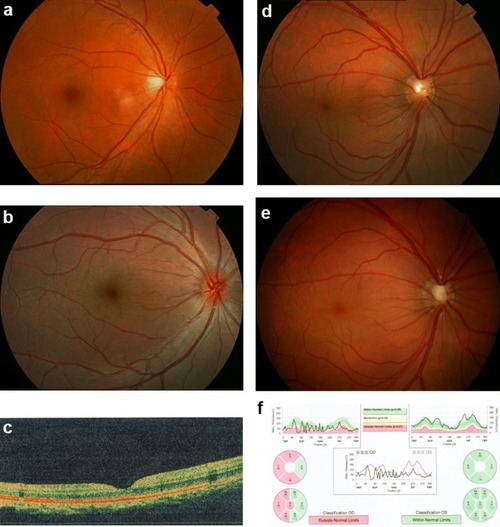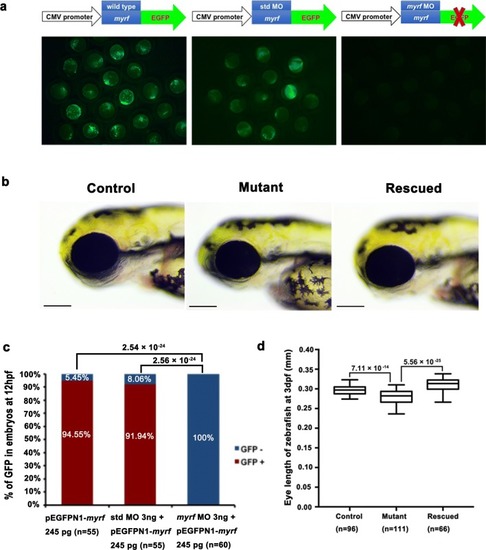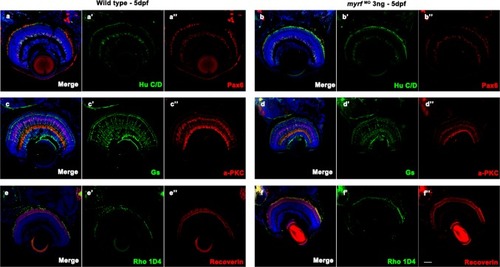- Title
-
Novel truncation mutations in MYRF cause autosomal dominant high hyperopia mapped to 11p12-q13.3
- Authors
- Xiao, X., Sun, W., Ouyang, J., Li, S., Jia, X., Tan, Z., Hejtmancik, J.F., Zhang, Q.
- Source
- Full text @ Hum. Genet.
|
Fundus changes associated with high hyperopia in family ZOC710536. |
|
Phenotype of PHENOTYPE:
|
|
Immunostaining images of labels for different retinal cells in zebrafish at 5 dpf. Frozen sections from wild-type larvae ( |



